Are you wondering when to plan and launch your holiday campaigns? Looking for a list of key components for your holiday marketing strategy?
In this article, you’ll get a complete guide to planning social media marketing campaigns for the 2022 holiday season—from seven essential elements to six recommended timelines.
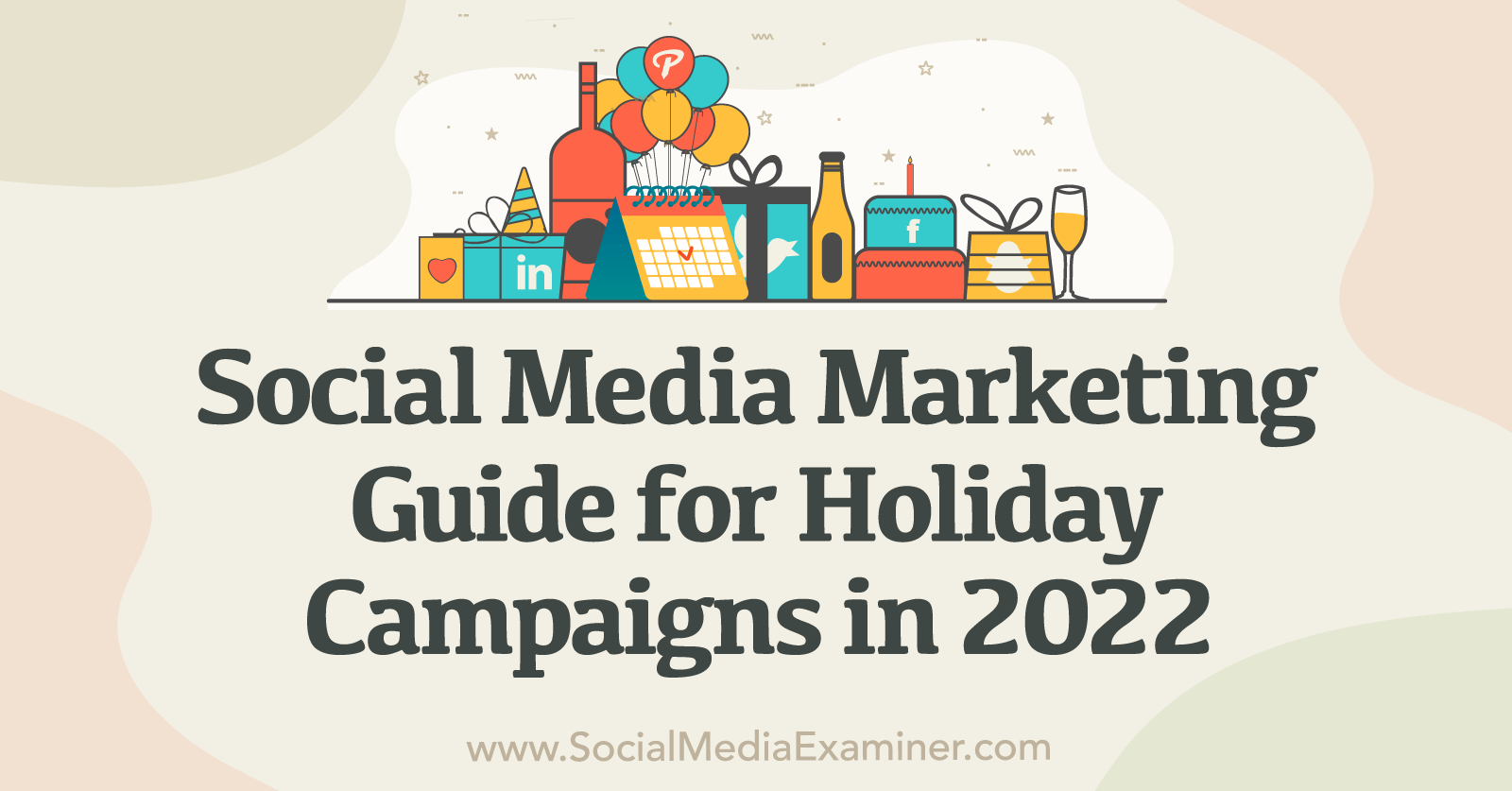
Why Advance Planning Matters for Social Media Marketing Campaigns
A successful social media campaign requires strategic planning, often months in advance. Without a roadmap, you're likely to end up with vague objectives, incomplete creative assets, and an overloaded content calendar. As a result, you could waste marketing spend and fail to meet major business goals.
In contrast, with advance planning, you can map out:
- Clear social media campaign goals to guide your strategy, content, and budget
- Complete lists of assets and realistic production, editing, and publication schedules
- Timelines that allow for stakeholder feedback and approvals to reduce the risk of publishing mistakes
- Social media marketing calendars that promote ongoing initiatives and holiday campaigns without overwhelming followers
7 Essential Elements to Have in Place for Holiday Campaigns
Holiday marketing campaigns tend to have a lot of moving parts. Yours may include social media as well as email marketing, pay-per-click (PPC) ads, or SMS marketing. Here, we'll focus solely on planning for paid and organic social media campaigns.
To track social media campaign elements and plan with your team, choose a tool that makes collaboration easy. For example, you can use Airtable to set up custom databases for your campaigns. Then you can track everything from campaign types and platforms to creative assets and promo links to publication dates and approval status.

#1: Social Media Marketing Campaign Objectives
First, clarify your objectives. For most of your holiday marketing campaigns, sales and conversions may be your ultimate targets. Before you can expect to drive sales and conversions, you may need to achieve objectives like increasing awareness of newly launched products or generating qualified leads.
Once you've decided on one or more objectives, set goals for each. Use your team's key performance indicators (KPIs) for click-throughs, leads, conversions, and/or revenue to set realistic social media campaign goals and measurable outcomes.
#2: Social Media Platforms
Next, consider which social media channels to use for your holiday campaign. It may make sense to leverage all of the social platforms where your brand has a presence or to focus on just one or two. To guide your decision, review your goals for the next social media campaign and your results from past holiday marketing efforts.
It's also helpful to consider the built-in capabilities of each platform. For example, if a landing page is a key part of your campaign, then Instagram may not be a good fit. Likewise, if product tagging is critical to your campaign, then Twitter may not drive the results you need.
For example, the @papersource Instagram post below uses the platform's built-in shopping tools to drive sales. Customers can tap to browse and buy the company's Hanukkah décor and gifts.
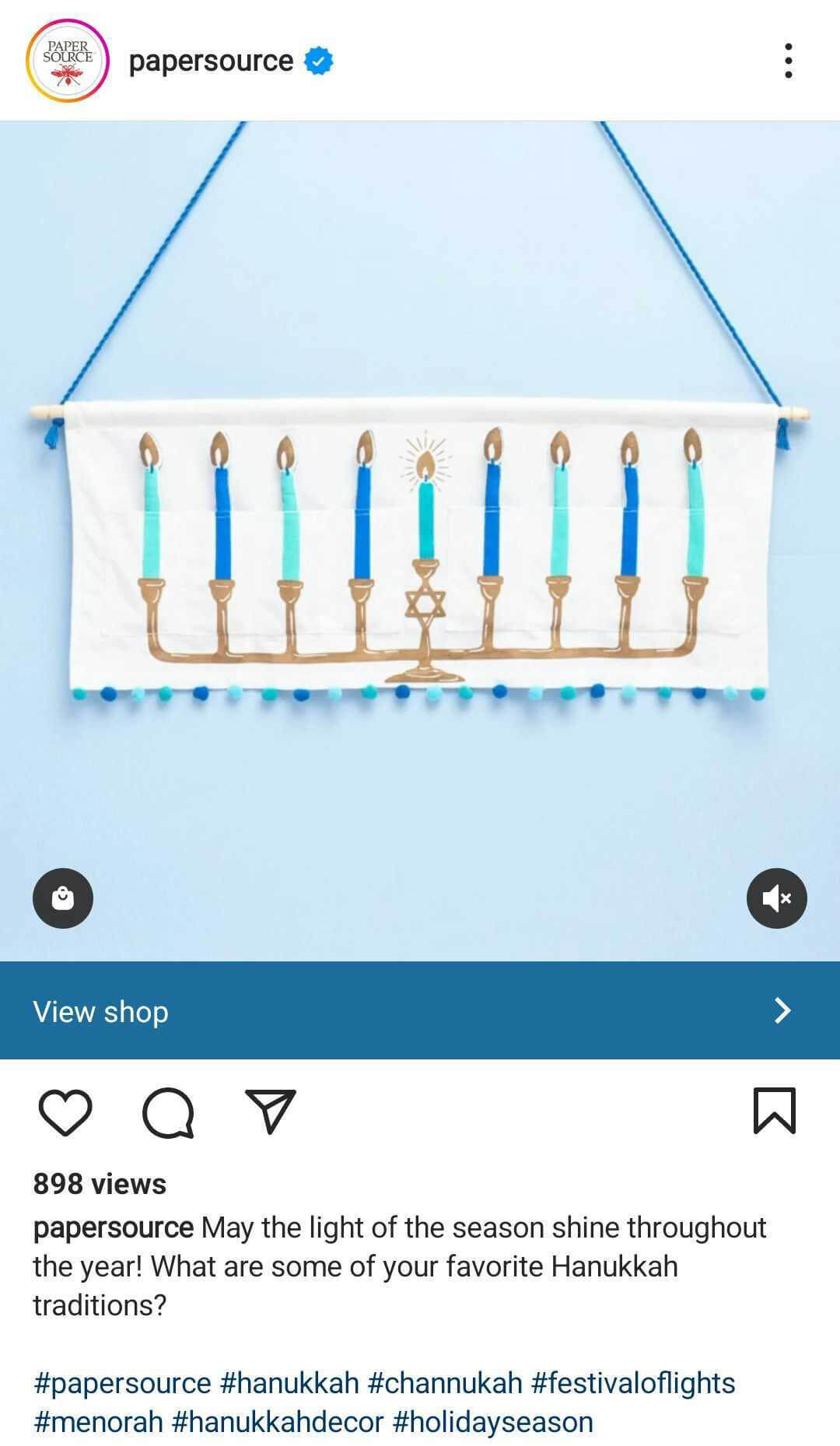
#3: Social Media Strategy
Next, think about how to use those social media platforms to achieve your goals. Start by creating an offer for your target audience. Here are a few offer types you might consider:
- Provide a seasonal discount or create a promotional code to drive sales.
- Give away a downloadable or viewable lead magnet to generate leads.
- Use a loss leader that provides something for free to incentivize more purchases.
- Create a tripwire to pique people's interest and get new customers in the door.
For example, the @reeses Instagram post below highlights the brand's Thanksgiving-themed Reese's pie. By promoting a limited-quantity item, the brand was able to leverage FOMO (fear of missing out) to drive sales during the Thanksgiving season.
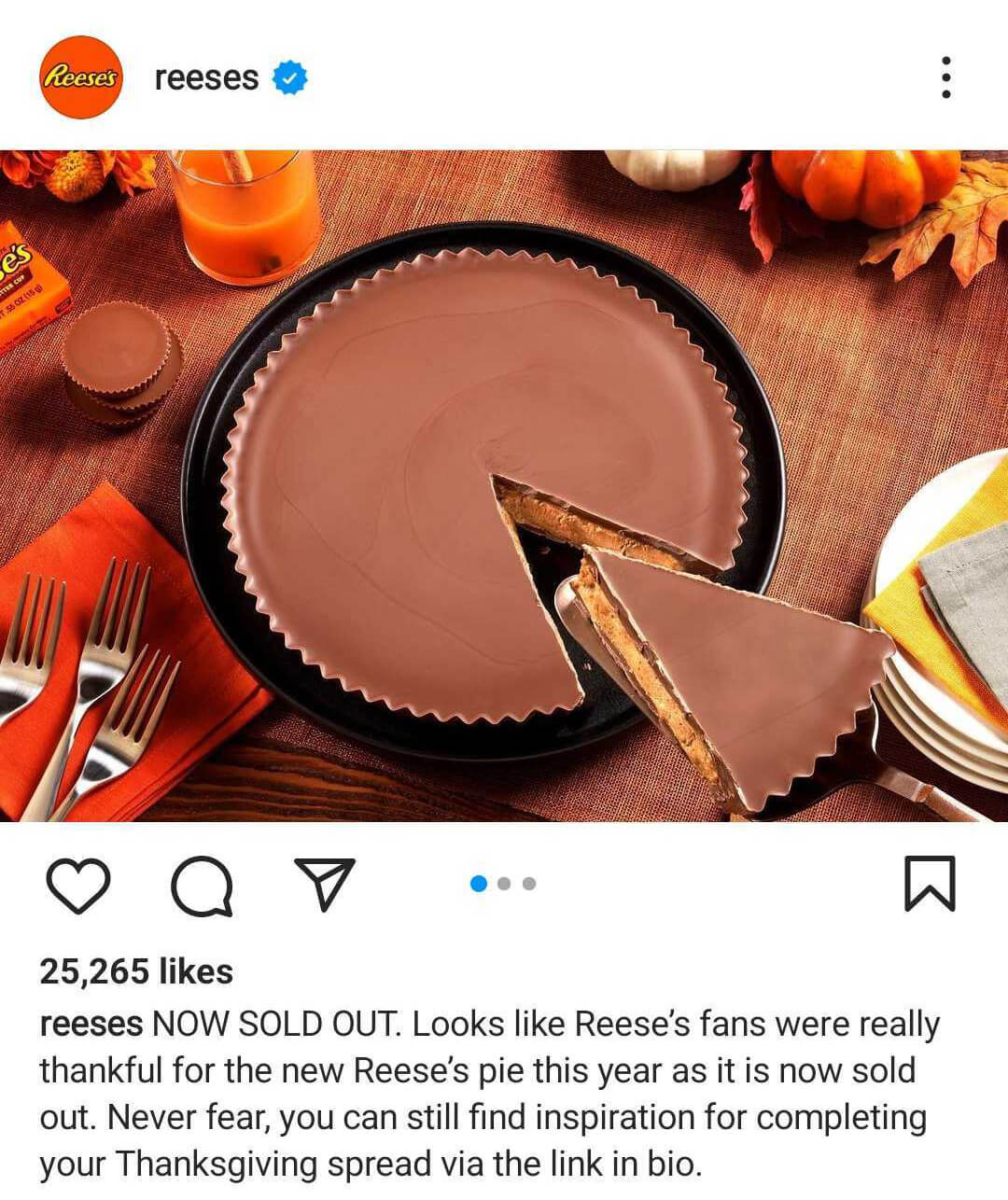
Then develop a plan for promoting your offer on social media. Here are a few holiday marketing strategies to try:
Get World-Class Marketing Training — All Year Long!
Are you facing doubt, uncertainty, or overwhelm? The Social Media Marketing Society can help.
Each month, you’ll receive training from trusted marketing experts, covering everything from AI to organic social marketing. When you join, you’ll also get immediate access to:
- A library of 100+ marketing trainings
- A community of like-minded marketers
- Monthly online community meetups
- Relevant news and trends updates
- Partner with influencers so you can reach new target audiences more effectively.
- Collect and share user-generated content to connect with customers.
- Host a contest or giveaway to boost awareness and promote your brand.
- Run social media ads to amplify reach and revenue beyond organic limits.
#4: Creative Assets
After mapping out a social media strategy, start listing the creative assets you'll need for your campaign. Here are some ideas to fuel your brainstorming session:
- Product photos and videos to showcase your new product line
- Lifestyle photos and videos to add an authentic touch to your content
- Branded graphics that call out your limited-time sales and discounts
- Full-screen, short-form videos you can post to Stories, Reels, TikTok, or YouTube
The number of assets you need depends on how many social media posts you plan to publish. In most cases, plan to publish at least one holiday asset per social media channel per week for the duration of the campaign. (See below for recommended timelines.) Sometimes you may want to post much more frequently—it's all about balancing holiday marketing with ongoing initiatives.
With a planning tool like Airtable, you can keep a running list tracking creative ideas and who's responsible for them. You can also assign production and coordination tasks to make the right person accountable. Once you produce each photo, video, or graphic, you can add it to your campaign database so your team can keep track of holiday marketing assets.

#5: Trackable URLs
Whether you've built landing pages specifically for holiday marketing campaigns or you plan to drive traffic to product and service pages, trackable URLs are critical. By adding UTM parameters to landing, product, or service page URLs, you can track campaign results more accurately and attribute conversions and revenue correctly.
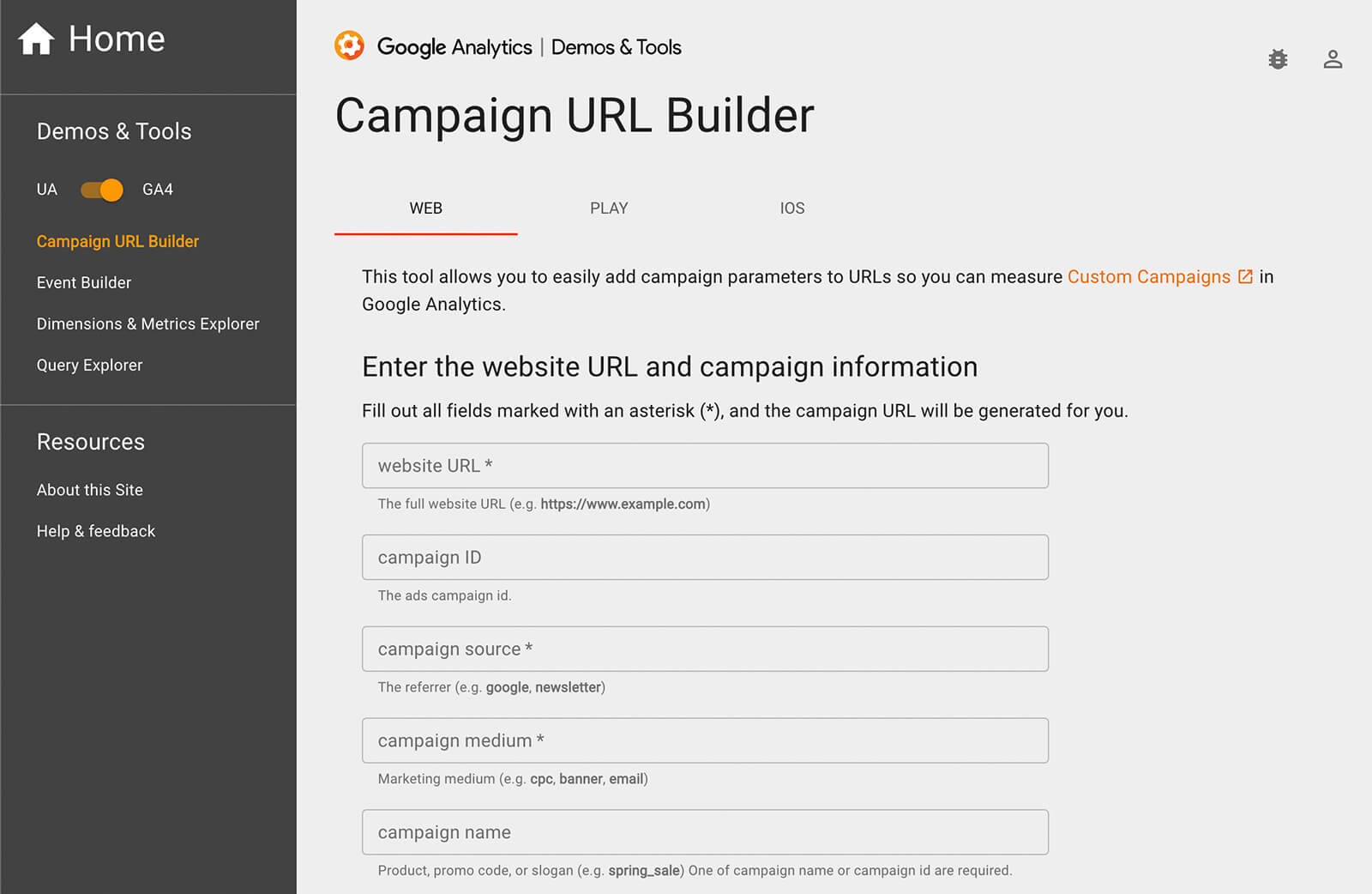
You can use the Google Analytics Campaign URL Builder to configure parameters for organic content that drive website traffic. Once you generate campaign URLs, add them to your team's shared database or paste them directly into your social media posts for use on your social channels.
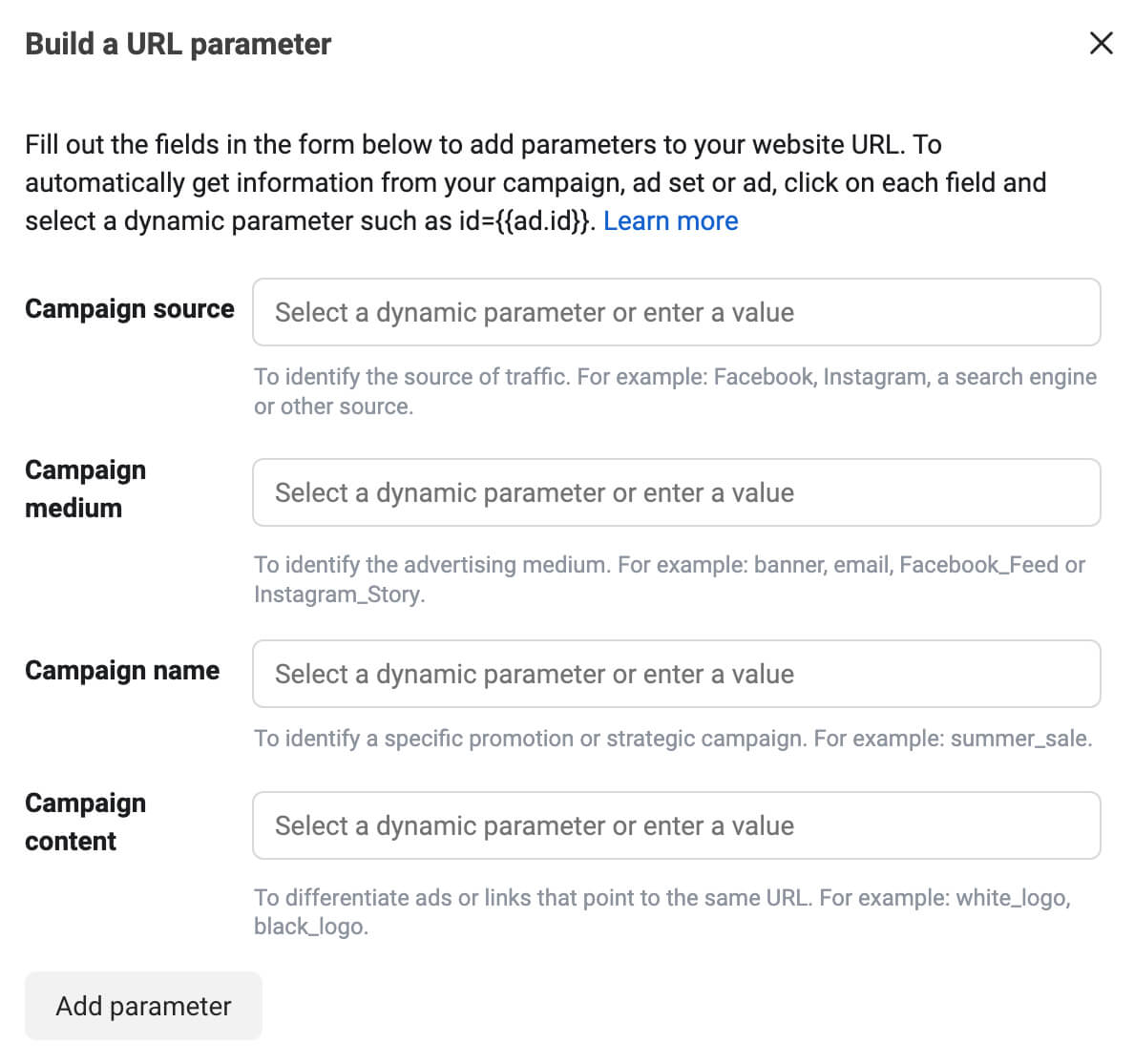
For paid campaigns, you can typically build URL parameters for each ad. For example, Facebook Ads Manager has a URL parameter tool at the ad level.
#6: Organic Social Media Content
Once you have your offers, campaign URLs, and creative assets in place, start drafting organic holiday marketing content. As you write copy, keep the customer journey in mind.
For example, it's often helpful to tease your offer to improve awareness at the beginning of your holiday campaign. Then you might alternate sales-focused posts with relevant content that solves customers' holiday-related concerns.
For example, the @Starbucks tweet below features one of the brand's holiday-themed beverages. This organic post is designed to drive awareness of limited-time offers during the Christmas season.
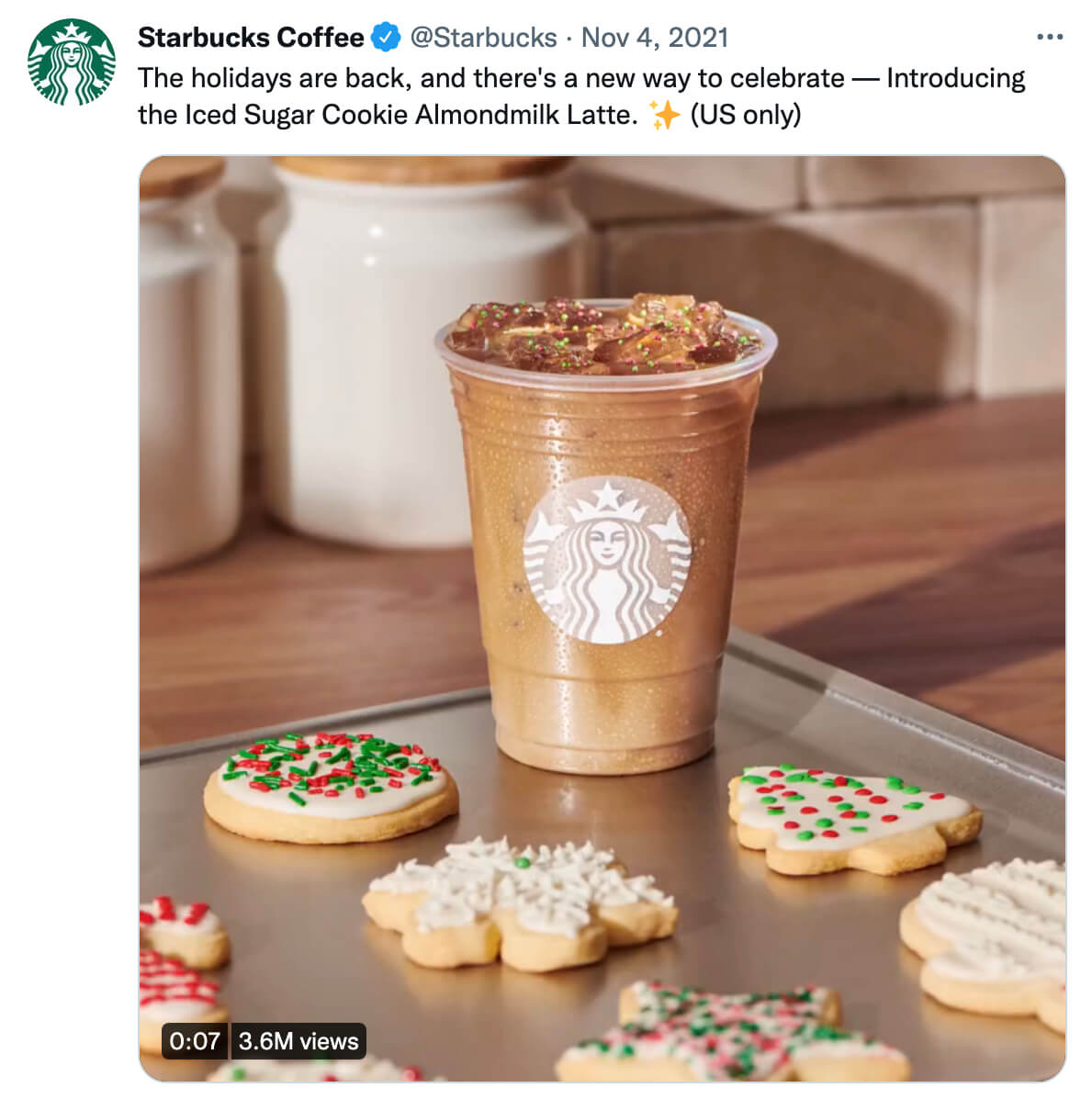
#7: Paid Social Media Content
When you create paid content, build a funnel that guides your target audience through the customer journey. Use remarketing audiences strategically to take potential customers from engaged prospects to happy holiday shoppers.
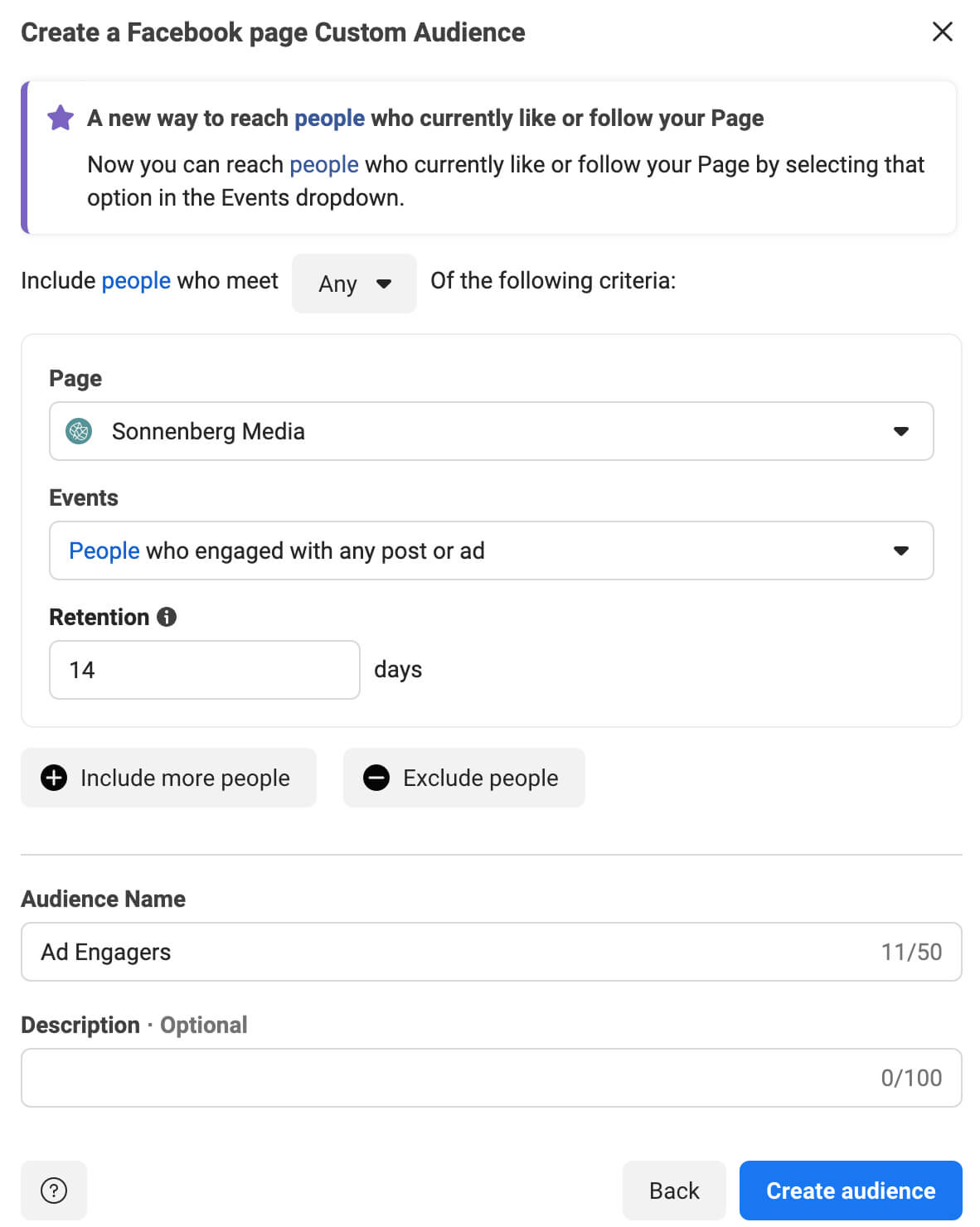
For example, you might start with an awareness-focused ad that introduces your target audience to your products or services and prompts engagement. Then you might run a consideration-focused video ad that targets people who engaged with your previous ad.
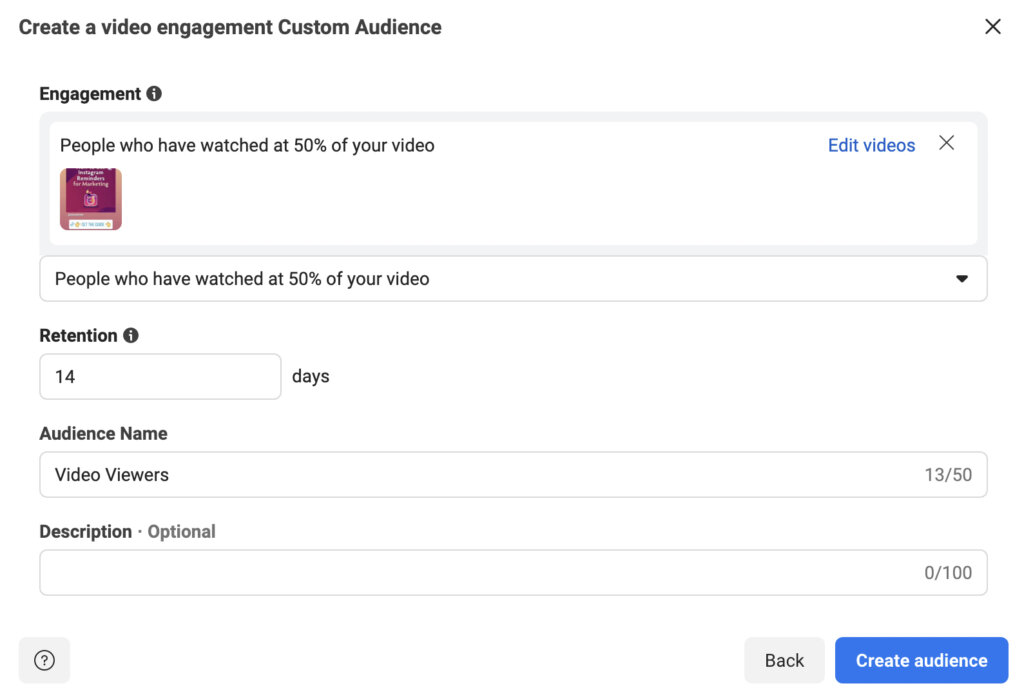
To drive conversions or catalog sales, you might run an ad that retargets video viewers. Then you might run another remarketing ad set that targets people who browsed items or added products to their shopping carts, prompting them to take advantage of your offer.

Discover Proven Marketing Strategies and Tips
Want to go even deeper with your marketing? Check out the Social Media Marketing Podcast! Publishing weekly since 2012, the Social Media Marketing Podcast helps you navigate the constantly changing marketing jungle, with expert interviews from marketing pros.
But don’t let the name fool you. This show is about a lot more than just social media marketing. With over 600 episodes and millions of downloads each year, this show has been a trusted source for marketers for well over a decade.
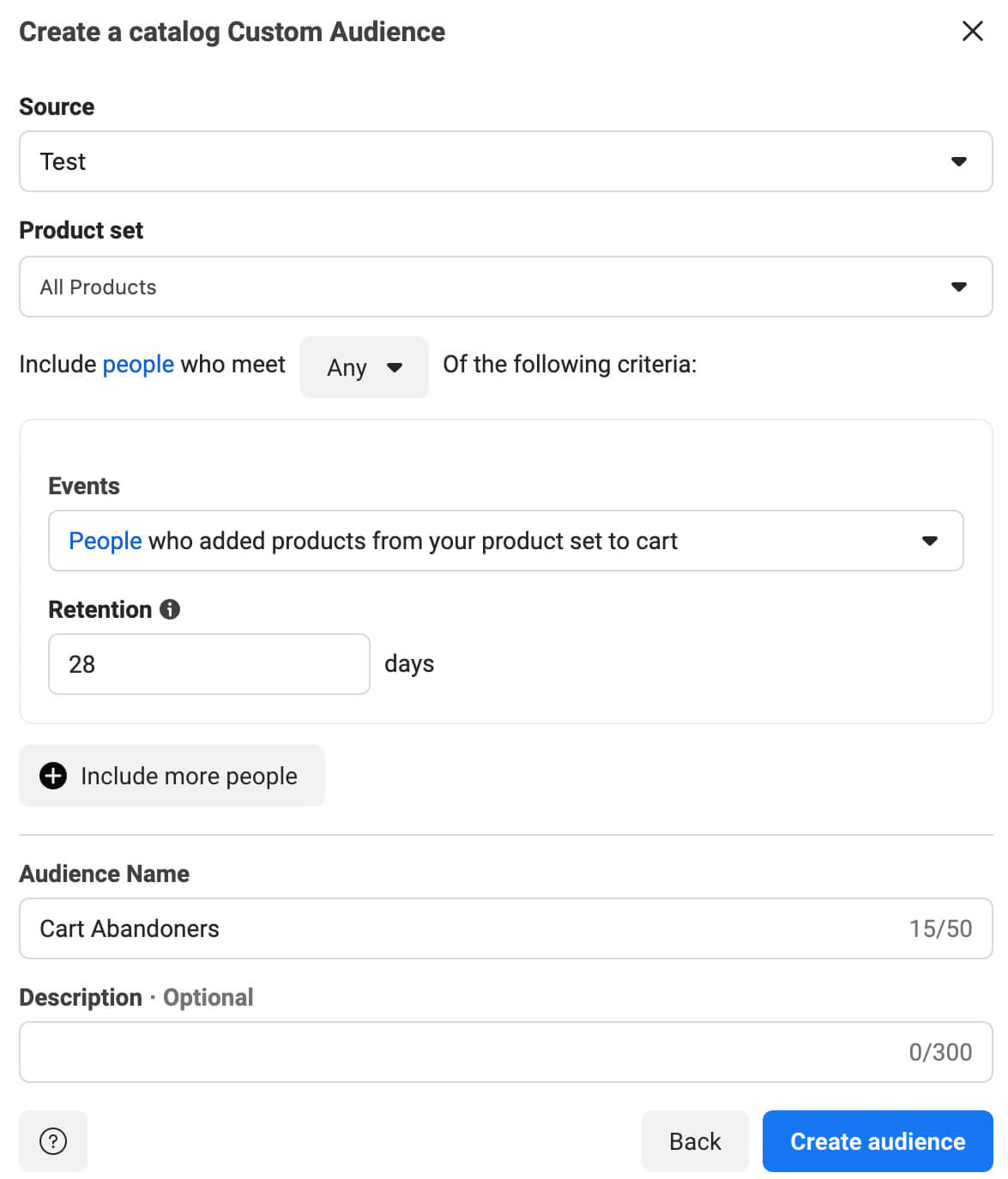
6 Social Media Holiday Campaign Execution Timelines
When setting timelines for holiday marketing campaigns, it's generally best to start the planning process about 6 months out. That way, you'll be prepared to launch the campaign when the shopping season begins, allowing your team to maximize results.
Keep in mind that for holidays like Christmas, the shopping season often starts 2 months or more before the actual holiday. For other holidays, the shopping season typically starts a few weeks out or when the previous holiday wraps.
In general, it's good practice to finish producing assets and begin scheduling them a month before the holiday season technically begins. About 2 weeks out, confirm that all campaign elements are in place and assign any real-time publishing or review tasks. During the holiday campaign, it's important to monitor social accounts and respond to engagement.
When wrapping holiday marketing campaigns, build at least a slight delay into your reporting schedule. That'll let you account for these common factors:
- If you run ad campaigns, allow at least 3 days to pass before processing results. Platforms like Facebook Ads Manager delay campaign results by up to 72 hours so results may be incomplete before this time.
- If you run eCommerce campaigns, wait until you've shipped all orders before running sales reports. If your company accepts returns, plan to prepare a final set of campaign reports once the return window closes.
How do these timelines translate to the 2022 holiday season? Here's your cheat sheet for holiday campaign planning.
#1: Social Media Campaign Timeline for Halloween
Begin brainstorming Halloween social media campaigns in early May to allow a full 6 months of planning prior to October 31, 2022.
Halloween Campaign Planning
Halloween decorating season generally starts on October 1, but shopping often begins in mid-September. Plan to have all paid and organic campaign assets in place by September 1.
Halloween Campaign Launch
Launch Halloween social media campaigns between mid-September and October 1. Then plan to run them through October 31 or when any limited-time promotions end.
For example, the @crest Instagram post below was published in early October. This schedule allowed the toothpaste brand ample time to promote its oral health campaign around the Halloween season.
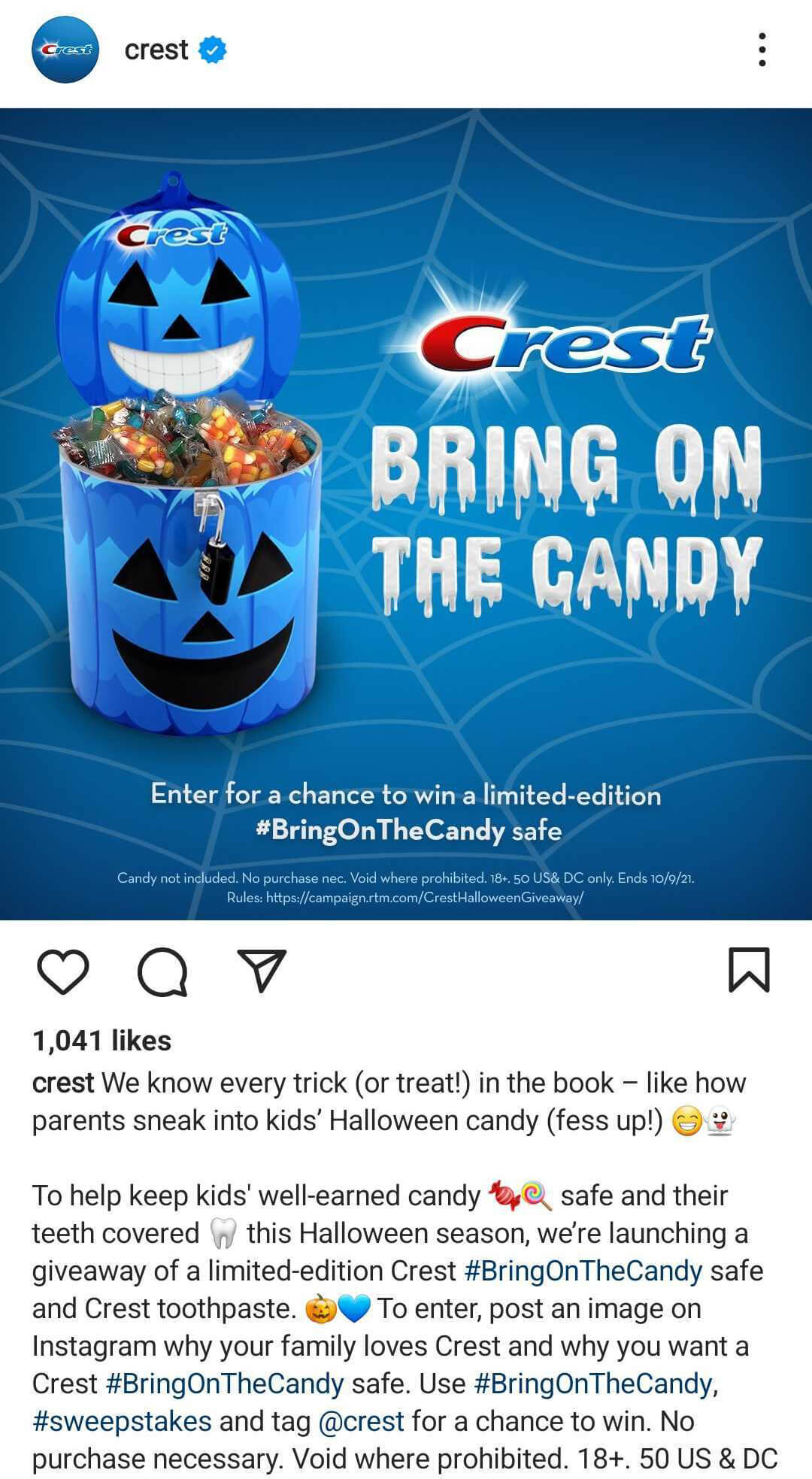
Halloween Campaign Wrap
You can report on Halloween campaign results as early as the first week of November. Build in extra time if you need to process shipping and return reports.
#2: Social Media Campaign Timeline for Thanksgiving
Start planning Thanksgiving social media campaigns in early June to give you 6 months of advance planning time prior to November 24, 2022.
Thanksgiving Campaign Planning
Thanksgiving hosts generally begin brainstorming their menus about 6 weeks before mealtime, typically in mid-October. Plan to finish producing all campaign assets by mid-September.
Thanksgiving Campaign Launch
Launch Thanksgiving social media campaigns in mid-October and run them through Thanksgiving or the end date for your sale or discount.
For example, the @butterball tweet below highlights the brand's Turkey Talk-Line. For more than 40 years, the brand has provided the Turkey Talk-Line during the Thanksgiving season, launching its 2021 promotions in mid-October.
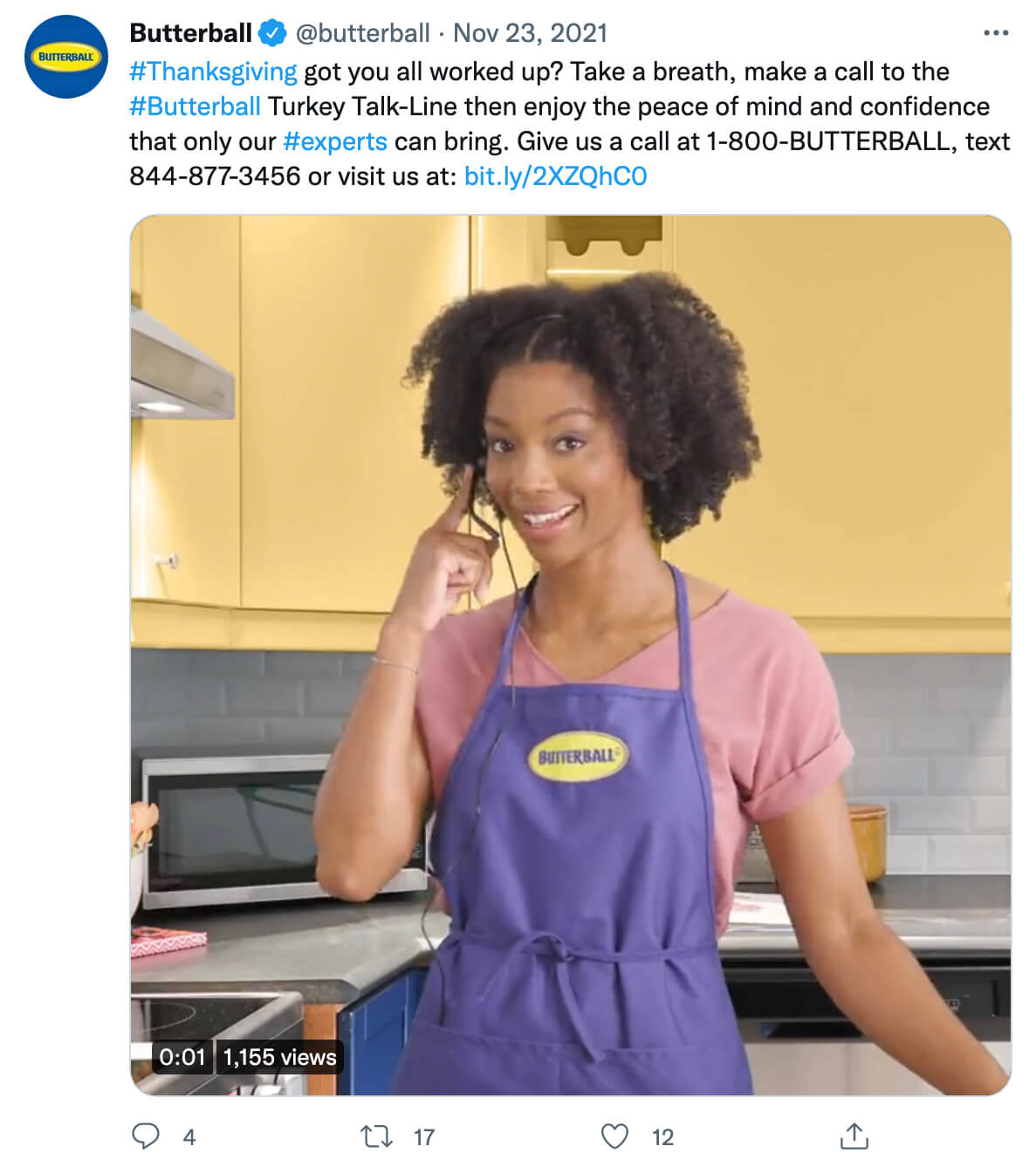
Thanksgiving Campaign Wrap
Plan to report on Thanksgiving campaign results the first week of December. You may be able to use insights to make last-minute adjustments to your Christmas, Hanukkah, or New Year's Eve campaigns.
#3: Social Media Campaign Timeline for Black Friday and Cyber Monday
Map out Black Friday and Cyber Monday campaigns in early June, giving your team 6 months of planning time before November 25-28, 2022.
Black Friday and Cyber Monday Campaign Planning
Although Black Friday doesn't technically start until the day after Thanksgiving, retailers begin teasing their offers as early as mid-October. Finalize campaigns by mid-September for a mid-October rollout or by early October for an early November rollout.
Black Friday and Cyber Monday Campaign Launch
Tease Black Friday and Cyber Monday social media campaigns by early November and fully roll them out at least a week before the shopping holiday.
For example, this @fitbit Instagram post highlights the brand's Cyber Monday offer. The limited-time offer builds on the brand's Black Friday promotion, posted a few days before.
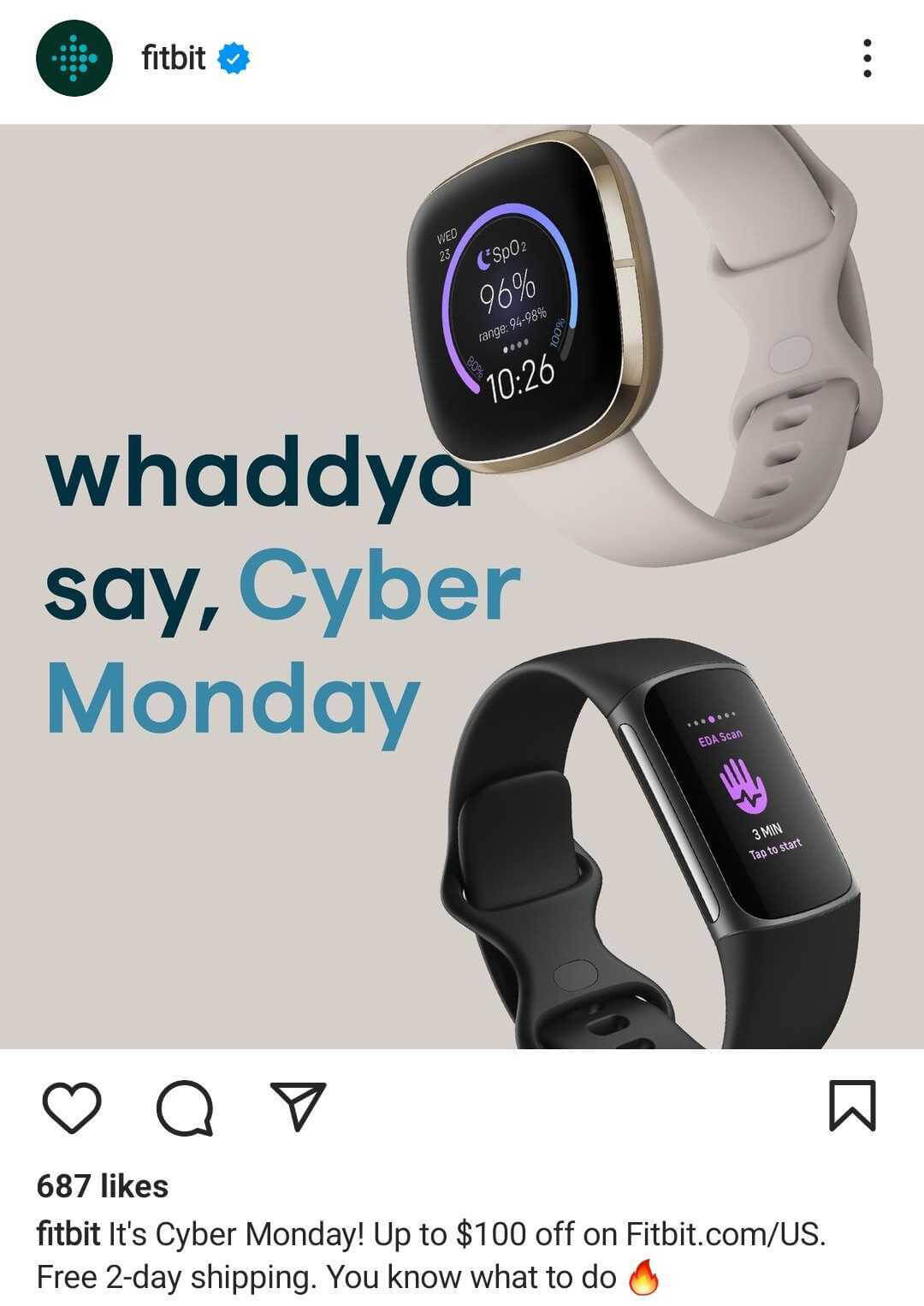
Black Friday and Cyber Monday Campaign Wrap
Aim to report on Black Friday and Cyber Monday campaigns a week after they conclude. If necessary, you can use insights to adjust any remaining holiday campaigns for the year, especially if sales were much higher or lower than projected.
#4: Social Media Campaign Timeline for Hanukkah
Get key Hanukkah plans and dates on the calendar starting in mid-June to allow 6 months of lead time before the 2022 holiday, which lasts from December 18 to 26.
Hanukkah Campaign Planning
Many retailers align Hanukkah campaigns with Christmas campaigns, which generally start in early November. Finalize your Hanukkah campaigns by early October.
Hanukkah Campaign Launch
Launch Hanukkah social media campaigns by early November and run them through the end of the holiday period.
For example, the @modernbreadandbagel Facebook post below promotes the bakery's Hanukkah specials. Published the first night of the holiday, this organic post is one of many the bakery posted before and throughout the holiday season.
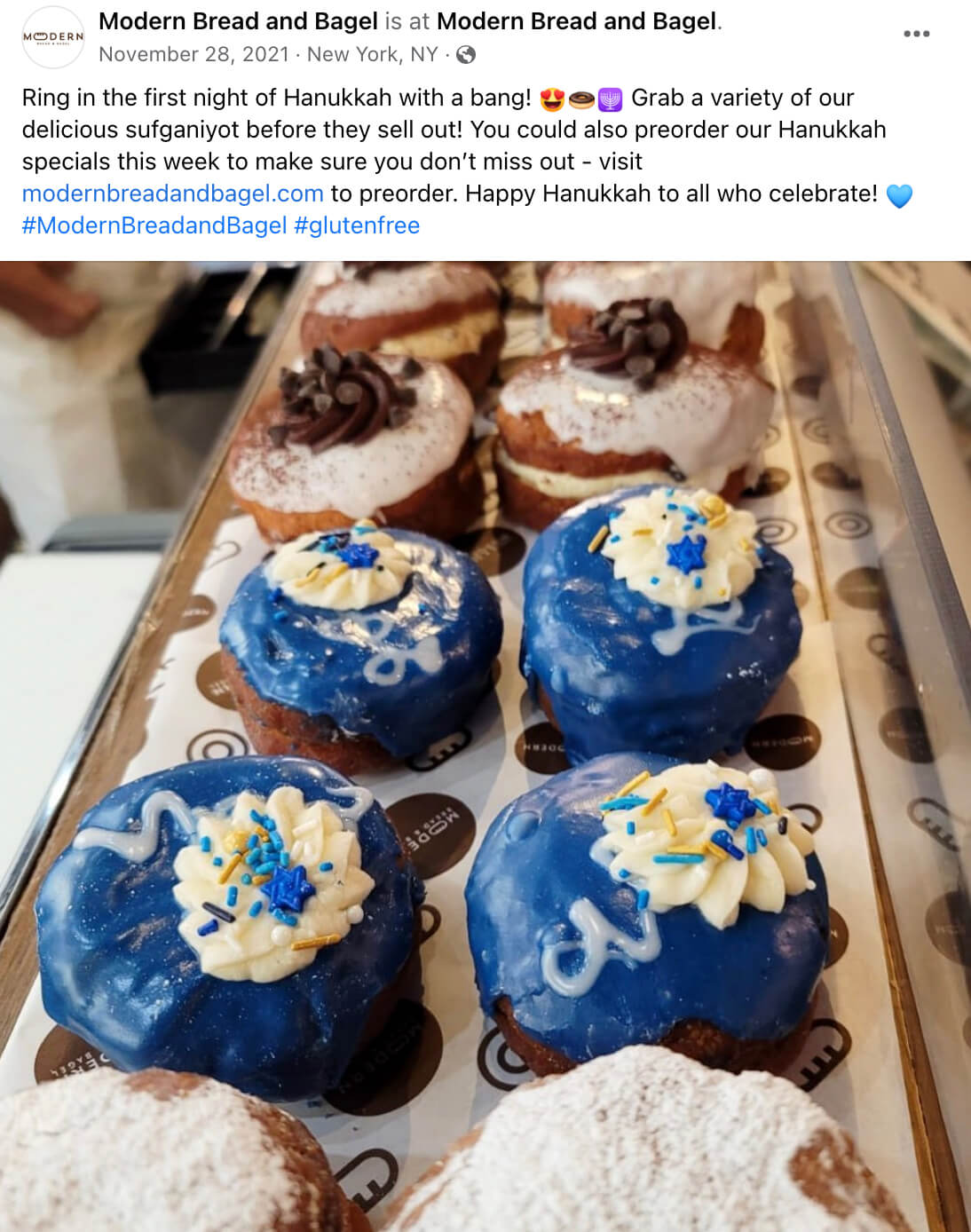
Hanukkah Campaign Wrap
Plan to conclude Hanukkah campaigns when the holiday ends and report on the results shortly after the first of the year.
#5: Social Media Campaign Timeline for Christmas
Plan to start your Christmas, Boxing Day, and Kwanzaa campaign planning in late June to give your team plenty of lead time before the December 25, 2022 through January 1, 2023 holidays.
Christmas Campaign Planning
Although the Christmas shopping season doesn't technically begin until Black Friday, retailers typically start rolling out Christmas, Kwanzaa, and Boxing Day campaigns in early November. Have yours ready to go by early October so you have time to work out the final details.
Christmas Campaign Launch
Launch Christmas and Kwanzaa social media marketing campaigns by early November. Begin teasing Boxing Day campaigns at least a week before the shopping holiday.
For example, this @bite Instagram post promotes the brand's stocking-stuffers. It was published in mid-November, giving the toothpaste brand ample time to roll out its Christmas marketing campaigns.
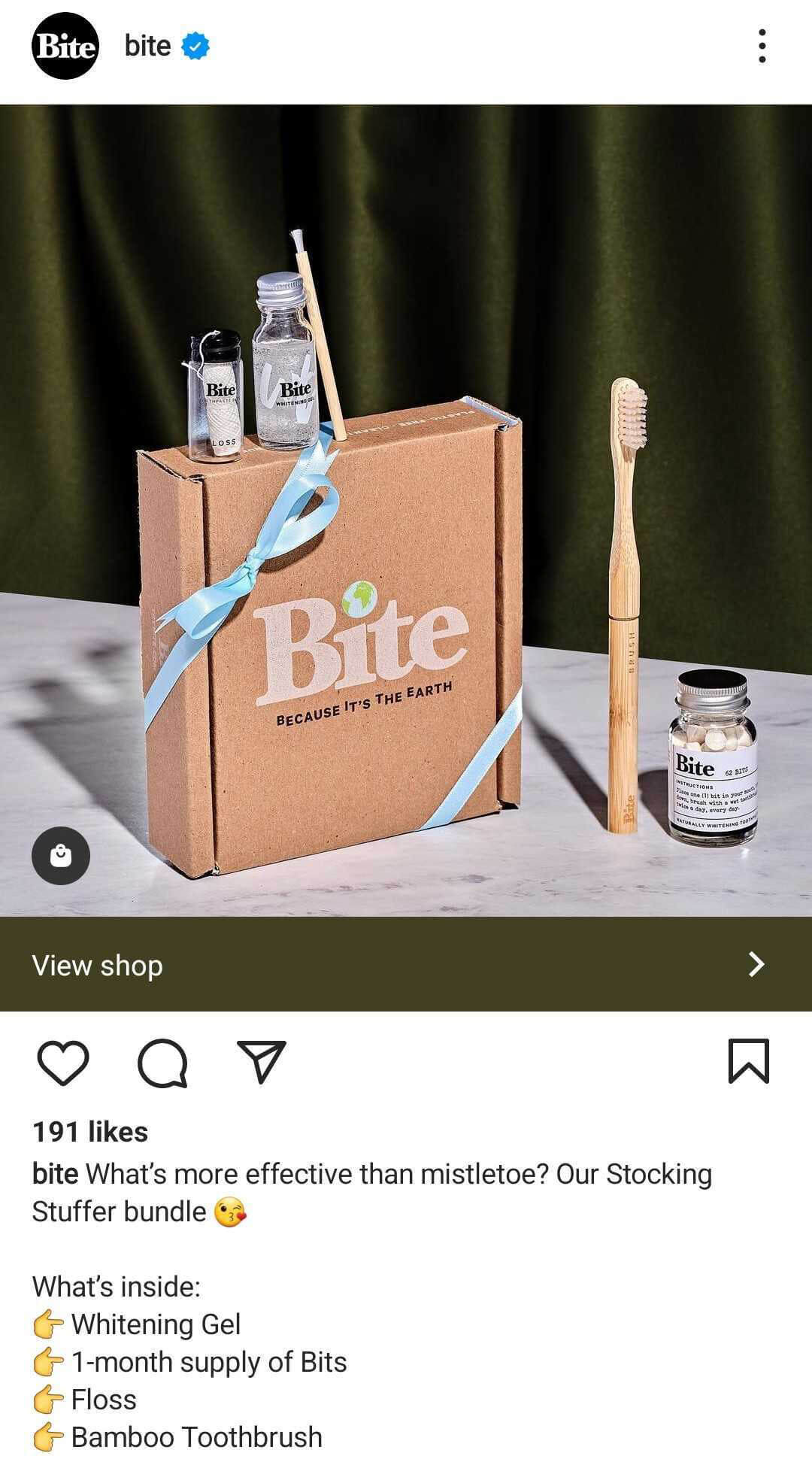
Christmas Campaign Wrap
In most cases, you can wrap Christmas campaigns right after the holiday. Yet Kwanzaa and Boxing Day campaigns may last into the new year. Aim to report on them in the first half of January.
#6: Social Media Campaign Timeline for New Year's Eve
Brainstorm New Year's Eve social media campaigns in late June, allowing 6 months of lead time before the December 31, 2022 holiday.
New Year's Eve Campaign Planning
New Year's Eve and end-of-year campaigns generally begin in early- to mid-December. Aim to finish planning yours by mid-November so you can incorporate them into your already busy holiday marketing calendar.
New Year's Eve Campaign Launch
Launch New Year's Eve social media campaigns by mid-December and run them through mid-January at the latest.
New Year's Eve Campaign Wrap
Most retailers wrap New Year's Eve campaigns shortly after the new year. Plan to conclude your reporting by the end of January.
Conclusion
From Halloween to New Year's Eve, holiday marketing campaigns require plenty of advance planning. By gathering essential elements and scheduling content on a realistic timeline, you can take steps to ensure the success of your social media campaigns for the 2022 holiday season.
Get More Advice on Holiday Social Media Campaigns:
- Discover five key steps to get the best possible results from your Facebook ad campaigns during peak holiday sales periods.
- Learn how to warm up an audience and deliver holiday-themed Facebook advertising campaigns.
- Find six tips for holiday marketing on Instagram.
Stay Up-to-Date: Get New Marketing Articles Delivered to You!
Don't miss out on upcoming social media marketing insights and strategies! Sign up to receive notifications when we publish new articles on Social Media Examiner. Our expertly crafted content will help you stay ahead of the curve and drive results for your business. Click the link below to sign up now and receive our annual report!
Attention Agency Owners, Brand Marketers, and Consultants

Introducing the Marketing Agency Show–our newest podcast designed to explore the struggles of agency marketers.
Join show host and agency owner, Brooke Sellas, as she interviews agency marketers and digs deep into their biggest challenges. Explore topics like navigating rough economic times, leveraging AI, service diversification, client acquisition, and much more.
Just pull up your favorite podcast app, search for Marketing Agency Show and start listening. Or click the button below for more information.

